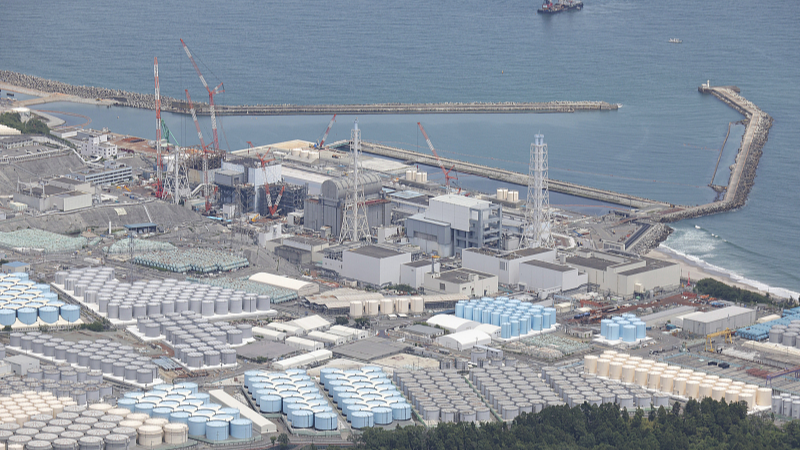
Fukushima No. 1 nuclear power plant in Okuma, Fukushima Prefecture, May 31, 2023. /CFP
Fukushima No. 1 nuclear power plant in Okuma, Fukushima Prefecture, May 31, 2023. /CFP
Japan started releasing nuclear-contaminated wastewater from the crippled Fukushima Daiichi Nuclear Power Plant into the Pacific Ocean on Thursday, despite raging opposition at home and abroad.
Live video provided by the plant operator Tokyo Electric Power Company (TEPCO) showed that a staff member turned on a seawater pump at around 1:00 p.m. local time (0400 GMT), marking the beginning of the controversial ocean discharge as concerns and opposition persist among local fishermen as well as in neighboring countries and Pacific island countries.
The radioactive wastewater has been diluted as planned before being discharged via an underwater tunnel one kilometer from the plant, according to TEPCO,
TEPCO plans to start monitoring radioactive materials in waters near the power station on Thursday and release the data the following day at the earliest.
Hit by a magnitude-9.0 earthquake and an ensuing tsunami on March 11, 2011, the Fukushima plant suffered core meltdowns that released radiation, resulting in a level-7 nuclear accident, the highest on the International Nuclear and Radiological Event Scale.
The plant has generated massive amounts of water tainted with radioactive substances from cooling down the nuclear fuel in the reactor buildings, which are being stored in about 1,000 storage tanks.
The Japanese government's reckless move to release the radioactive wastewater has sparked waves of anger among local fishermen, especially those in Fukushima.
(With input from Xinhua)


